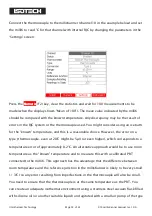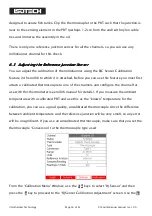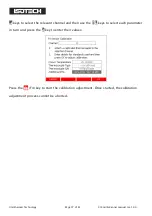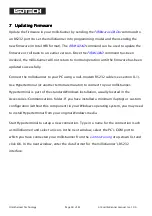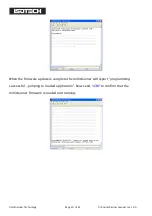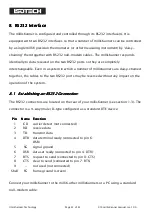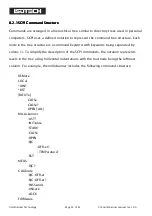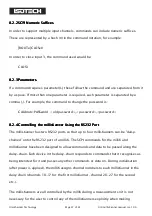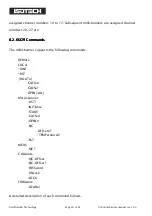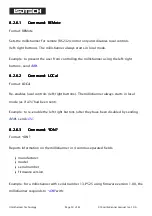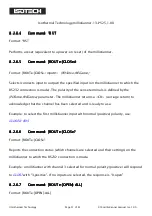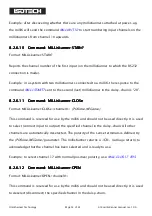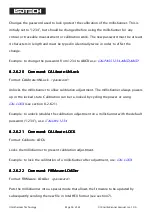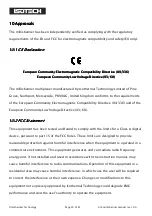
©Isothermal Technology
Page 48 of 61
914 millisKanner manual Iss. 1.00
measurements via the RS232 port. The millisKanner’s unused RS232 port at the opposite
end of the daisy chain to the milliK can be connected to a PC. The same commands used
to make measurements with the milliK can be used to make measurement via the
millisKanner channels. These are passed forward by each millisKanner until they reach
the milliK. The milliK then issues the required commands to the millisKanners in order to
select the specified channel and synchronises this with the measurements. Any
responses from the milliK are passed back to the PC via the millisKanners.
For example, consider a milliK with two millisKanners attached. The PC is connected to
the RS232 port on the second millisKanner, which will automatically be assigned channel
numbers 20-27 by the milliK. To measure the resistance of a 4-wire PRT connected to
the first input on the second millisKanner (channel 20) on the 125
Ω
range at normal
current (1mA), the user can simply send the command:
MEAS:RES20? 125,NORM,4
This is identical to the command required to read directly from channel 1 of the milliK
(see milliK manual) but with the channel number specified as 20 rather than 1.
8.2.5
8.2.5
8.2.5
8.2.5
Terminology
Terminology
Terminology
Terminology –
––
– Inputs and Channels
Inputs and Channels
Inputs and Channels
Inputs and Channels
The terminals on a millisKanner are referred to as “Inputs” and are numbered 0 to 7 on
each multiplexer. When connected to a milliK, these inputs are allocated a unique
channel numbers so that they can be referenced/addressed by the milliK. The terms
“Input” and “Channel” are used in this manual to distinguish between the physical input
to the multiplexer and the number used to address the input channel.
The channel numbers are assigned by the milliK to each millisKanner in blocks of 8
aligned to the nearest decade value. The first millisKanner connected to the milliK is


